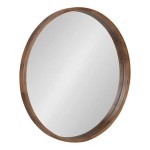Mirroring a Windows Screen: A Comprehensive Guide
Screen mirroring enables you to share the display of your Windows computer on another device, such as a TV or projector. This capability is incredibly useful for presentations, home entertainment, and various other scenarios. Here's a comprehensive guide on how to mirror a Windows screen:
Wired Screen Mirroring
HDMI
Most modern computers and TVs feature an HDMI port. To mirror your screen using HDMI, connect a cable from your computer's HDMI port to the TV's HDMI port. Ensure that both devices are powered on and set to the correct input.
VGA
Older computers and projectors may use a VGA connection. To use a VGA cable, connect one end to the VGA port on your computer and the other end to the VGA port on the external display.
Wireless Screen Mirroring
Miracast
Miracast is a wireless screen mirroring technology built into Windows 10 and later. It allows you to mirror your screen to compatible TVs, projectors, and other devices that support Miracast. To use Miracast, make sure both devices support the technology and are connected to the same Wi-Fi network.
Wi-Fi Direct
Some devices offer screen mirroring through Wi-Fi Direct, which creates a direct connection between the devices without the need for a Wi-Fi network. This option may be suitable for devices that do not support Miracast.
Chromecast
Chromecast is a streaming device that allows you to mirror your Windows screen wirelessly. To use Chromecast, connect the device to your TV's HDMI port and set it up using the Google Home app. Once connected, you can mirror your screen by selecting the Chromecast icon in the Windows display settings.
Windows Screen Mirroring Settings
Once you have connected your devices, you can configure the screen mirroring settings. Right-click on the desktop and select "Display Settings." Under the "Multiple Displays" section, click on "Extend these displays" or "Duplicate these displays" depending on your desired configuration. You can also adjust the resolution and orientation of the mirrored display.
Tips for Screen Mirroring
- Ensure that your devices support the appropriate screen mirroring technology.
- Check the cable connections and ensure they are secure.
- If using Wi-Fi, make sure both devices are connected to the same network.
- Update your graphics drivers for optimal performance.
- Restart both devices if you encounter any issues.
By following these steps and adhering to the tips, you can successfully mirror your Windows screen to an external display for various purposes. Enjoy the benefits of screen mirroring for enhanced presentations, entertainment, and productivity.

How To Mirror Windows Screen Another Device In 11 10
:max_bytes(150000):strip_icc()/002-show-screen-using-miracast-4774962-a1c8f1bb18b244d1a04c5df9cdb28d73.jpg?strip=all)
How To Use Screen Mirroring Miracast In Windows 10

Desktop Mirroring Or Extend Technology Services

How To Cast Or Screen Mirror Windows 10 A Smart Tv
How To Mirror Your Windows 10 Pc An Android Projector

How To Mirror Your Windows 10 Screen Another Device Minitool

How To Mirror Your Screen On Windows 2 Easy Ways

How To Mirror Your Screen On Windows 2 Easy Ways

Ultimate Guide Screen Mirroring Windows 11 For Beginner

Connecting For Screen Mirroring Using Windows 8 1








